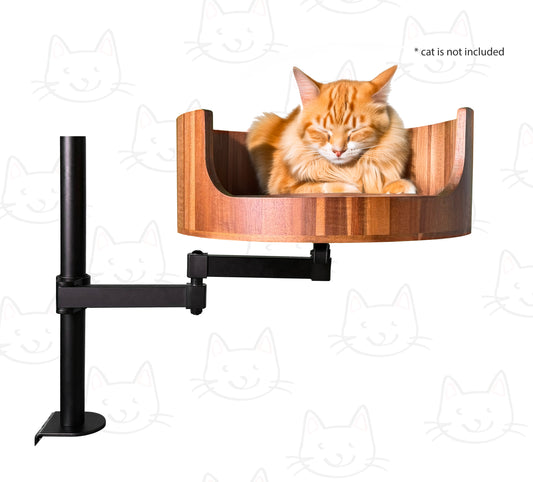
How Does a Cat Cry: Understanding Feline Emotions
Share
Have you ever wondered how cats express their emotions through crying? Cats are known for their mysterious and often aloof behavior, but they are also skilled at communicating their feelings in subtle ways. In this article, we will delve into the world of feline emotions and explore the various ways in which cats cry to convey their needs and desires. From vocalizations to body language, understanding how cats express themselves can help deepen our bond with these enigmatic creatures.
One of the most common ways that cats cry is through meowing. While it may seem like they are simply making noise, cats use different types of meows to communicate various emotions such as hunger, playfulness, or distress. By paying attention to the pitch, tone, and frequency of your cat's meows, you can begin to decipher what they are trying to tell you. Additionally, cats also use their body language to convey their emotions. From purring contently when they are relaxed to hissing defensively when they feel threatened, observing your cat's physical cues can provide valuable insight into their emotional state. By decoding these cries and cues, you can better understand and connect with your feline companion on a deeper level.
1. Cats communicate their emotions through a variety of vocalizations such as meows, purrs, hisses, and growls.
2. Understanding a cat's body language, such as tail position and ear movement, can also provide clues about their emotions.
3. Environmental factors, such as changes in routine or the presence of other animals, can impact a cat's emotional state.
4. Providing a comfortable and safe space, like a cat nest, can help reduce stress and anxiety in cats.
5. By observing and responding to a cat's vocalizations and body language, owners can better understand and meet their feline companion's emotional needs.
How Cats Express Emotions
Cats are known for being masters of hiding their emotions, but they do have ways of expressing how they feel. One common way a cat may cry is through vocalizations such as meowing, purring, or hissing. Each of these sounds can indicate a different emotion, whether it be happiness, distress, or fear. Additionally, cats may cry through their body language by arching their back, puffing up their fur, or flattening their ears. Understanding how cats communicate their emotions can help pet owners better care for and bond with their feline companions.
Signs of Distress in Cats
When a cat is crying, it could be a sign of distress. Cats can experience stress, anxiety, or fear for various reasons, including changes in their environment, loud noises, or interactions with other animals. Some common signs of distress in cats include excessive meowing, hiding, aggression, or changes in eating and grooming habits. It's important for pet owners to recognize these signs and address the underlying cause to help their cat feel more comfortable and secure.
Seeking Professional Help
If a cat is crying excessively and showing signs of distress, it may be necessary to seek help from a veterinarian or animal behaviorist. These professionals can help identify the root cause of the cat's emotional distress and provide guidance on how to address the issue effectively. In some cases, medication or behavior modification techniques may be recommended to help the cat feel more at ease. By seeking professional help, pet owners can ensure their cat's emotional well-being is being properly addressed and managed.
Frequently Asked Questions
How does a cat cry?
A cat's cry or meow is a form of communication. Cats have a wide range of vocalizations that they use to express their needs and emotions, and crying is just one of them. Cats may cry when they are hungry, scared, in pain, or seeking attention. The sound of a cat's cry can vary depending on the situation and the individual cat.
Is a cat's cry the same as a human crying?
No, a cat's cry is not the same as a human crying. While both involve vocalizations, a cat's cry is primarily used for communication with other cats or humans. Cats do not cry tears like humans do when they are sad or emotional. Instead, a cat's cry can vary in pitch, tone, and intensity depending on their needs and emotions.
What should I do if my cat is crying excessively?
If your cat is crying excessively, it could be a sign of an underlying health issue or emotional distress. It is essential to observe your cat's behavior and consult with a veterinarian to determine the cause of their excessive crying. Your vet may recommend medical treatment or behavior modifications to address the issue.
Can I train my cat to cry less?
While you cannot necessarily train a cat to cry less, you can work on understanding and addressing the underlying reasons for their crying. Providing your cat with a comfortable and stimulating environment, meeting their basic needs, and offering regular affection can help reduce excessive crying. Additionally, working with a professional animal behaviorist can provide guidance on managing your cat's vocalizations.
In conclusion, understanding how a cat cries is crucial in maintaining their overall health and well-being. Providing a comfortable and soothing environment for your furry feline friend can go a long way in addressing their emotional needs. The Desk Cat Bed is a valuable choice for cat owners as it offers a cozy and safe space for cats to rest and relax, reducing stress and anxiety that may lead to excessive crying. Its ergonomic design and plush materials ensure maximum comfort, promoting a sense of security and calmness for your beloved pet. Invest in a Desk Cat Bed today to provide your cat with the ultimate sanctuary for a happier and healthier life.



















































